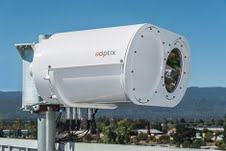One of AOptix’s field trials of its wireless backhaul solution has resulted in the start of construction for deployment of its laser/radio frequency dual-technology product, with networks expected to be complete mid-second quarter of this year.
Anova Technologies, which provides trading connectivity for financial companies, said that construction of its first path using AOptix’s ULL-3000 has begun in the New York/New Jersey metro area.
Michael Persico, CEO and founder of Anova, has spoken with the BBC about plans to install such a link between the New York Stock Exchange and the NASDAQ in Chicago and said that information could be sent in half the time that it takes via fiber.
Persico called the beginning of the Anova Technologies network construction “monumental.”
“We’ve moved the technology from the trial network into operational deployment,” he added. “To date, our tests have delivered results that exceeded our model-based forecasts. We believe our networks will be the fastest in all weather conditions.”
AOptix, based in Campbell, Calif., already has several trials of its Intellimax wireless product under its belt, both with Anova and a tier-one North American wireless carrier. AOptix uses both radio frequency and optical light to send data, with both links sending the same data simultaneously in order to maintain high reliability regardless of weather conditions. A real-time packet selection algorithm chooses the best data from across the two frequencies in order to ensure quality transmissions.
The technology was originally developed by the company to solve issues of in-air data connectivity for the military, for communications between aircraft flying at mach speed or to transmit to the ground. In those contexts, Dean Senner, chairman and CEO of AOptix, has said that the technology allowed data to be transferred in real-time via four-inch laser beams sent to a four-inch receiver target, at up to 80 gigabits per second over distances as far as 200 kilometers.
Developed for terrestrial mobile backhaul, Intellimax is designed to offer fiber-like capabilities in terms of speed and reliability, over long distances between two and eight kilometers, Senner said, at a fraction of the cost of fiber.
Senner called the technology “ideal for mobile backhaul, enterprise last mile access, ad-hoc mobile networks and low latency networks like the one we’re building with Anova. As we move into the deployment phase, Anova’s expertise combined with our breakthrough wireless technology will create a compelling offering for the financial community, delivering bandwidth, speed and availability along the shortest, most direct route.”
Anova has used millimeter wave deployment for financial exchange connectivity, and it has routing software that uses an algorithm to find the shortest geodesic paths that it is combining with AOptix’s technology, as well as more than 5,000 FCC-registered licenses for shortest-distance paths.
Kieran Athy, CTO of Anova Technologies, added that the company’s technology “empowers us, from the office, to coordinate our installation field techs around any line of sight obstacles with accuracy of within 18-24 inches. We are beyond the old-school line of sight process everyone else utilizes where crews on the ground end up dictating path shape and adding links because they can’t find a way around a tree, for example. That’s how other providers end up with zigzag wireless routes that are slower than they should be.”
The companies said that hundreds of radios are being deployed in the coming weeks to overlay Anova’s shortest-path spectrum in the New York and New Jersey area with the AOptix ULL-3000.

